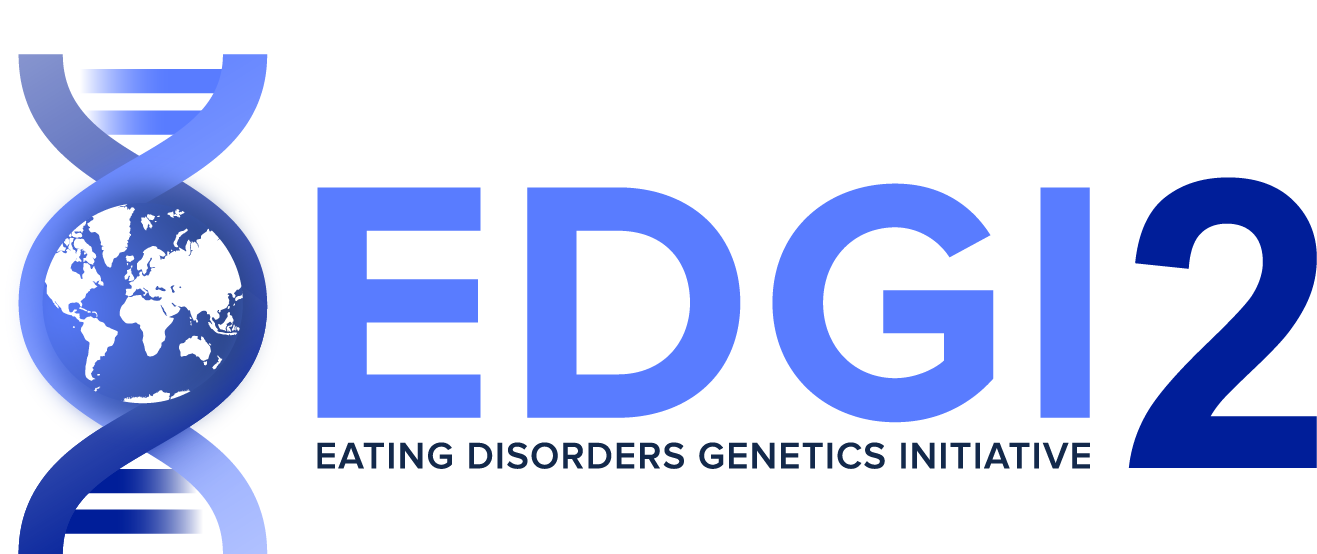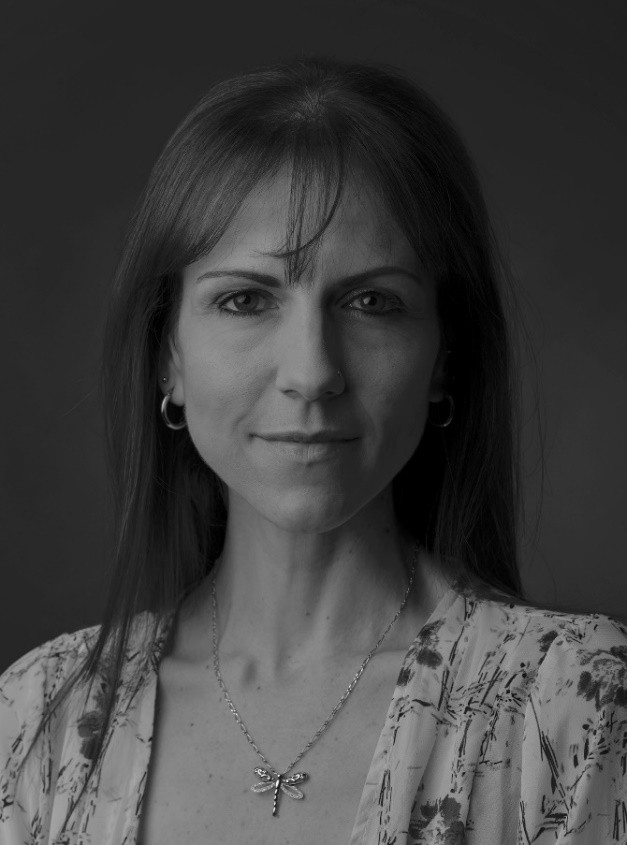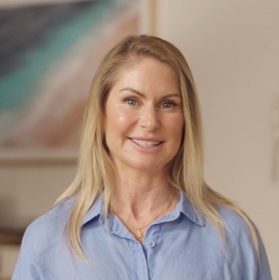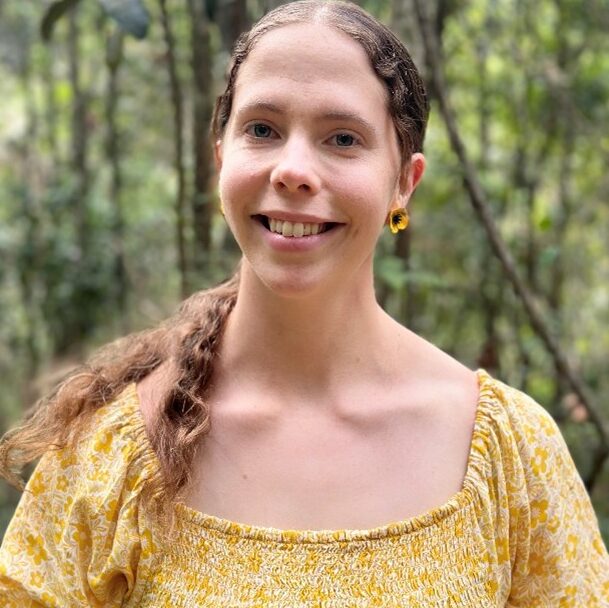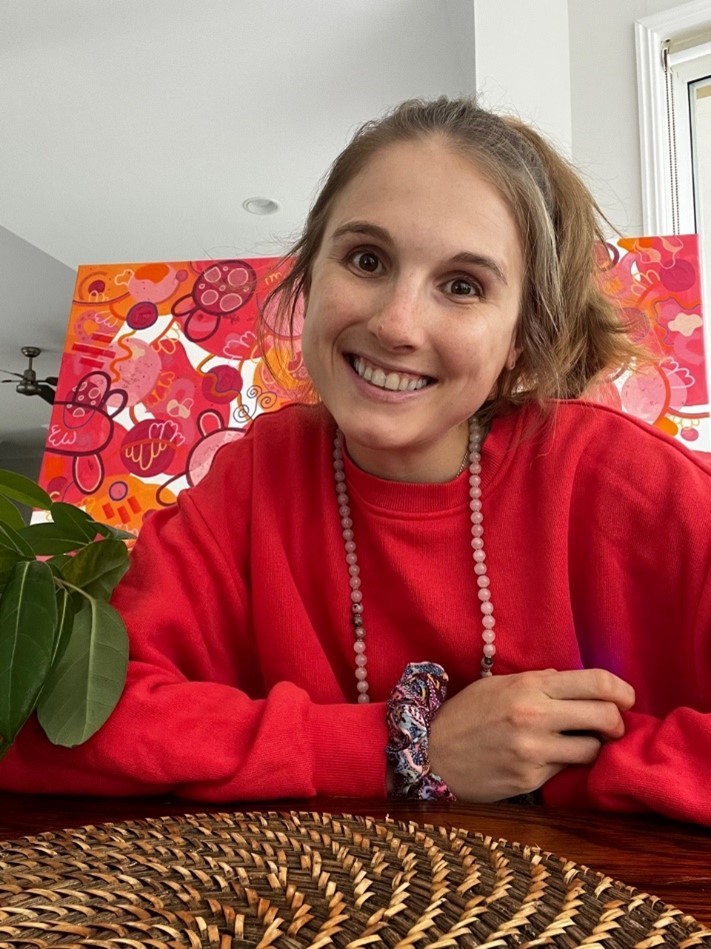Lived experience educator, adviser, and dog mum, Shannon, 48, Perth, was diagnosed with anorexia nervosa and bulimia nervosa in 1990, while attending boarding school in South Africa, where she was hospitalised and assessed by a medical team and psychologist. She was 13 years old at the time.
Two years earlier, Shannon started to feel disconnected from her body, especially given she was tall at the time, which set her apart from her peers.
During puberty, she developed reproductive issues that required medication, which subsequently led to weight gain. This sparked distress and shame as for Shannon, as it wasn’t something she could control, and eventually led to restrictive eating and escalating binge-purge behaviours.
Characterised by psychiatric and physical symptoms,1,2 anorexia nervosa is a serious and complex illness marked by extreme food restriction, and significant, and often dangerous, weight loss.3 Bulimia nervosa involves recurrent binge-eating episodes (consumption of unusually large amounts of food in a relatively short space of time) followed by compensatory behaviours.1
Shaped by societal pressures and her empathic nature, Shannon’s eating disorder emerged in childhood.
It deepened over time, with emotional distress and helplessness driving eating disorder behaviours as a coping mechanism. Fluctuating between anorexia nervosa and bulimia nervosa, Shannon battled a relentless cycle of restriction, bingeing, purging, and laxative use that continued for decades.
Despite being severely unwell, Shannon struggled to accept her diagnosis, “feeling like a fraud for years”.
The nature of the eating disorders convinced her she wasn’t “sick enough”, leaving her in denial, discomfort and shame.
In her teens, Shannon was also diagnosed with anxiety, depression, and, later with complex trauma. Years into her recovery, she was also diagnosed as neurodivergent – conditions that often co-occur with eating disorders.4, 5
She notes a genetic link to her eating disorders, citing a family history of disordered eating, including an extended family member who lived with anorexia nervosa.
Now nine years into her recovery, Shannon channels her personal journey into eating disorder advocacy, education, and driving systemic change.
She has chosen to participate in the Eating Disorders Genetics Initiative 2 (EDGI2) study – the world’s largest genetic investigation of eating disorders ever performed, that aims to identify the hundreds of genes that influence a person’s risk of developing complex, devastating eating disorders – including anorexia nervosa, bulimia nervosa, binge-eating disorder and avoidant restrictive food intake disorder (ARFID) – to improve treatment, and ultimately, save lives.
EDGI2 follows the ground-breaking advances made in the initial EDGI investigation and collaborative Anorexia Nervosa Genetics Initiative (ANGI), in which researchers, including the EDGI team, identified the first eight genes for anorexia nervosa that implicate both psychiatric and metabolic causes for the condition. This was a total surprise and a finding that urgently needs replication and expansion to fully understand the pathways that lead to this debilitating condition – hence the need for a much larger sample size, which is the aim of EDGI2.
This is Shannon’s story.
Shannon began showing signs of an eating disorder in her early teens, with puberty intensifying her distress.
By age 13, she had received diagnoses of anorexia nervosa and bulimia nervosa – conditions that would remain part of her life for more than three decades.
“I didn’t feel I was ‘sick enough’ to accept my diagnosis.
“I knew I had eating disorder-related behaviours, but I couldn’t fully accept the diagnosis as my experience. That went on for quite some time, even though I was incredibly unwell,” said Shannon.
Shannon had life-long concerns about her body image, especially due to the disconnect she felt with her body, physically and emotionally.
“I felt very disconnected and uncomfortable in my body, especially when it began to change.
“I was taller than my peers, and people would say, ‘You’re a big girl.’ They meant tall, but as a child, the word ‘big’ left little room for interpretation — and certainly not in a positive light,” Shannon said.
Shannon’s disordered eating escalated when she realised she was unable to control the natural development of her weight, shape and size.
“I thought the only way to change my normal development was to reduce my food intake. But I also found comfort and connection in food, which led me to struggle with binge-purge behaviours. Over time, these behaviours escalated and left me significantly unwell for many years.
“In the early years, I lost a significant amount of weight and put my body under immense strain in a short period of time. I was first hospitalised when I was 14,” said Shannon.
Shannon recognised she couldn’t control many of the challenges taking place in her environment, and emotions further fuelled the development of her anorexia nervosa.
“My emotional distress began when I felt powerless to improve things both at home and in the world at large.
“I sadly convinced myself I could control my eating disorder. As much as I resented it, I believed it was my only way to cope with circumstances I couldn’t change,” Shannon said.
Shannon was in and out of hospital and treatment for her anorexia nervosa and bulimia nervosa for many decades.
“My symptoms included daily laxative abuse, bingeing, and purging, worsened by severe food restriction and nutrient deprivation. It did so much damage physically and mentally,” said Shannon.
Shannon acknowledges a family history of disordered eating and possible eating disorders, suggesting a genetic link to her own experience.
“I believe an aunt had anorexia nervosa, and reflecting upon past behaviours, I’ve observed what I recognise as disordered eating, and possible undiagnosed eating disorders in several family members over the years.”
Now, nine years into recovery, Shannon supports those with past and current eating disorder experiences.
“I’ve used my lived experience with longstanding eating disorders and mental health challenges to work with peers on supporting and improving systemic reform.
“That means advocating for a better, more person-centred system of care, while also providing education and training for the health professionals, specifically in eating disorders,” Shannon said.
Shannon has an important message for other Australians living with an eating disorder.
“Even if your concerns feel small, please don’t wait. Find someone you trust. Speak to your GP, a family member, a teacher or a friend, and reach out for support.
“Eating disorders can take so much from your life, but with the right help, you can start to heal and live the life you truly deserve,” said Shannon.
To volunteer for, or learn more about the Eating Disorders Genetics Initiative 2, head to edgi2.org.au or email edgi2@qimrb.edu.au.
Should you suspect you, or a loved one, may be living with an eating disorder, speak to your local healthcare practitioner without delay, or head to insideoutinstitute.org.au to complete their online screener and assessment, and to access more information and professional support.
Australian professional patient support services offering 24/7 helpline services include:
- Butterfly National Helpline: 1800 334 673
- Beyond Blue: 1300 22 4636
- LifeLine: 13 11 14
- Men’s Line Australia: 1300 78 99 78
- Kids Help Line: 1800 55 1800
ends#
To coordinate an interview with Shannon, please contact:
Kirsten Bruce or Sam Jacobs, VIVA! Communications
M 0401 717 566 | 0422 654 404
T 02 9968 3741 | 0434 799 839
E kirstenbruce@vivacommunications.com.au | sam@vivacommunications.com.au
References
1. American Psychiatric Association. Diagnostic and Statistical Manual of Mental Disorders. Fifth ed 2013.
2. Eating Disorders Victoria. Classifying Eating Disorders 2024 [Available from: https://eatingdisorders.org.au/eating-disorders/what-is-an-eating-disorder/classifying-eating-disorders/].
3. Walsh BT, Hagan KE, Lockwood C. A systematic review comparing atypical anorexia nervosa and anorexia nervosa. Int J Eat Disord. 2023;56(4):798-820.
4. Hambleton A, Pepin G, Le A, Maloney D, Touyz S, Maguire S. Psychiatric and medical comorbidities of eating disorders: findings from a rapid review of the literature. J Eat Disord. 2022;10(1):132.
5. National Eating Disorders Collaboration. Co-occuring conditions 2024 [Available from: https://nedc.com.au/eating-disorders/types/co-occurring-conditions].
